Abstract
The role of the alternative pathway in complement-mediated prevention of immune precipitation has been investigated by the use of BSA-anti-BSA immune complex (IC) purified components. For immune precipitation to be prevented all six alternative pathway components (C3, factors B D, P, H and I) were required. In the absence of one or both of the control proteins H and I, excessive fluid phase turnover of C3 occurred with precipitation of IC. Kinetic studies showed that in the presence of the control proteins, an initial phase of precipitation occurred, and was followed by a phase of resolubilization of IC. When the efficiency of classical and alternative pathways in the prevention of immune precipitation was compared it was found that the classical pathway proteins were more effective than the alternative pathway components. A reaction mixture containing the components of both pathways was no better than the classical pathway protein alone. 125I-C3 was bound to IC which had been rendered soluble in the presence of classical or alternative pathway components. A molar ratio of two molecules C3b:five molecules IgG was calculated. Other complement components which were bound to IC which had been formed in the presence of serum were C1q, C4, C2, C3, C5, P and H. Factors B and I were not detected. Our findings suggest that the alternative pathway is of secondary importance to the classical pathway in the prevention of immune precipitation.
Full text
PDF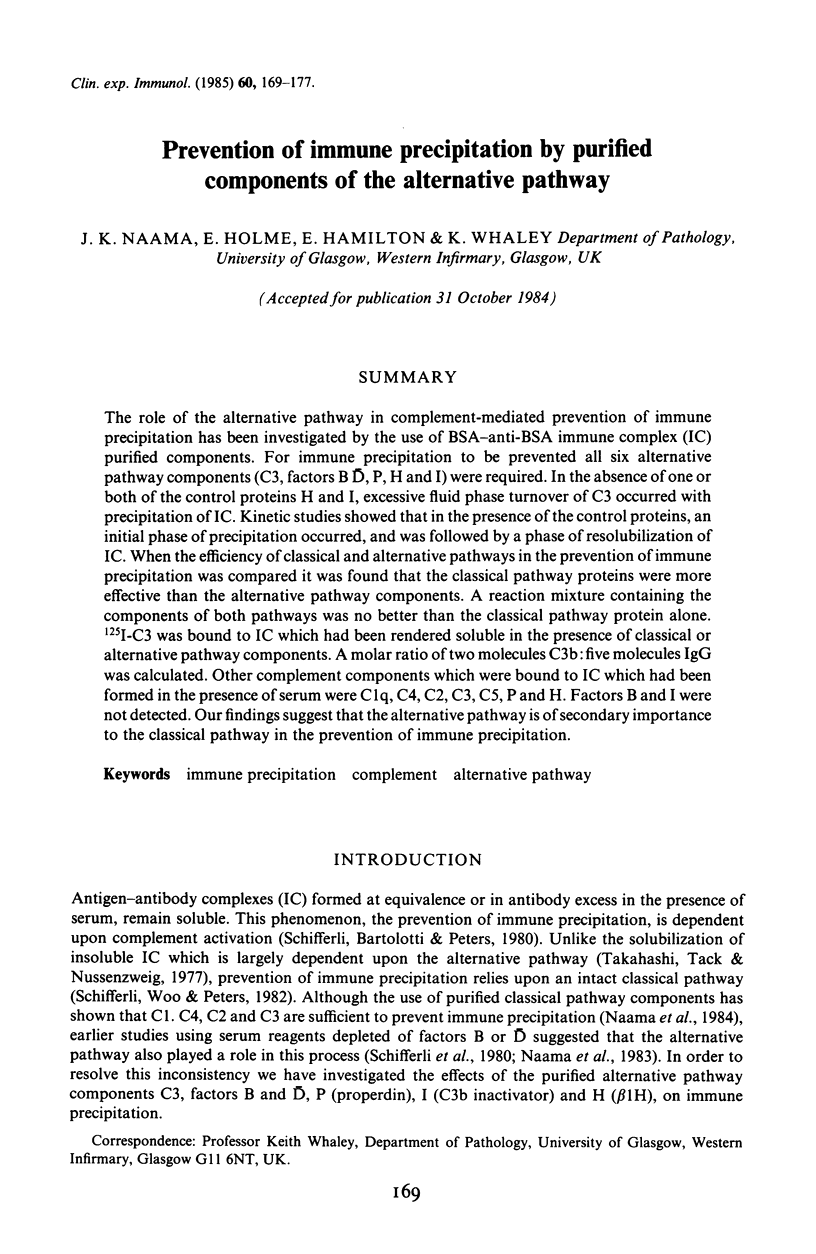
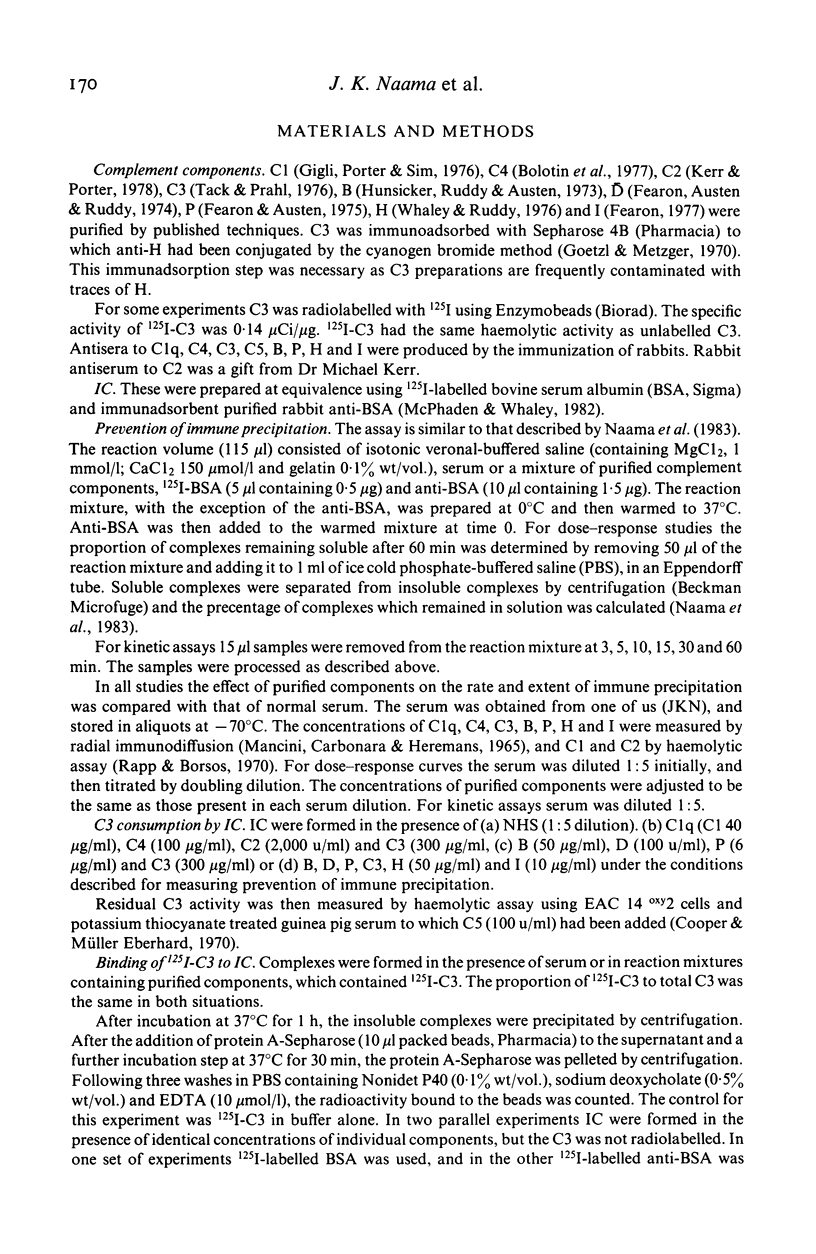
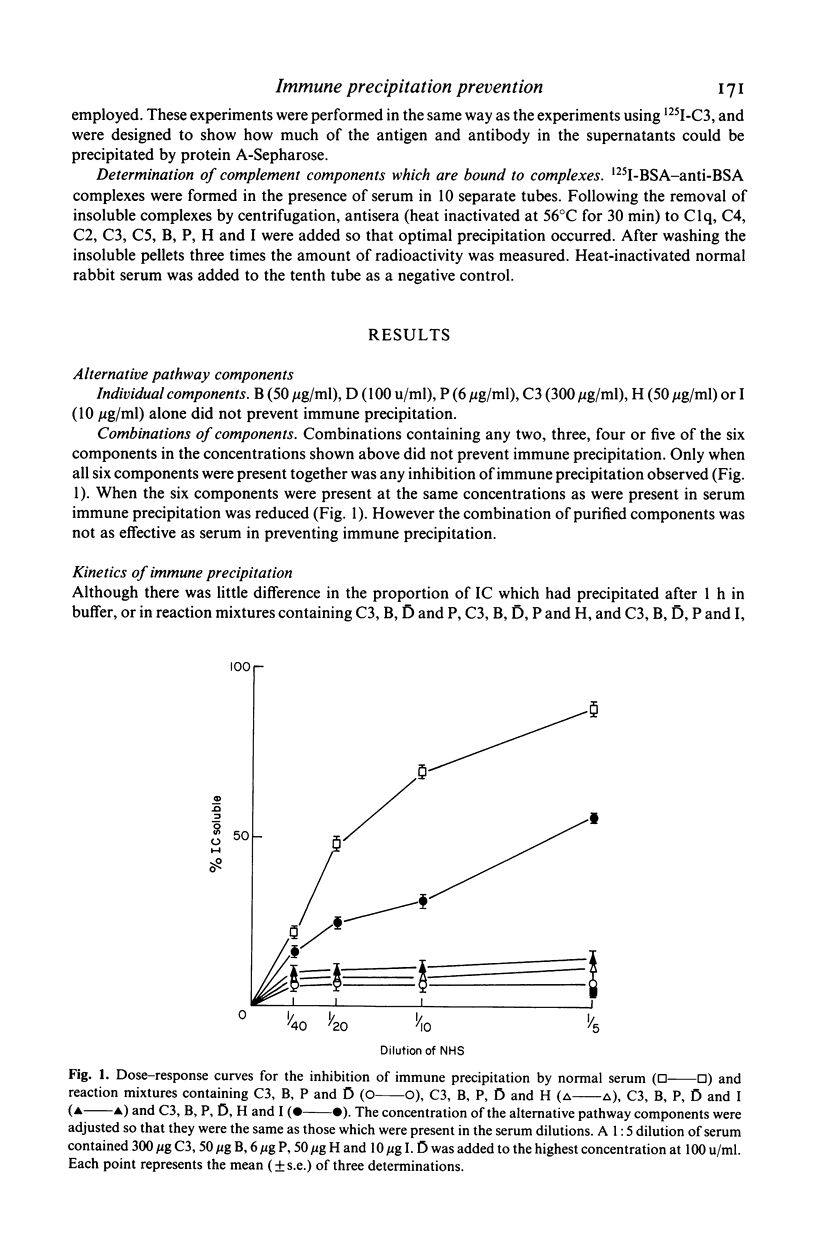
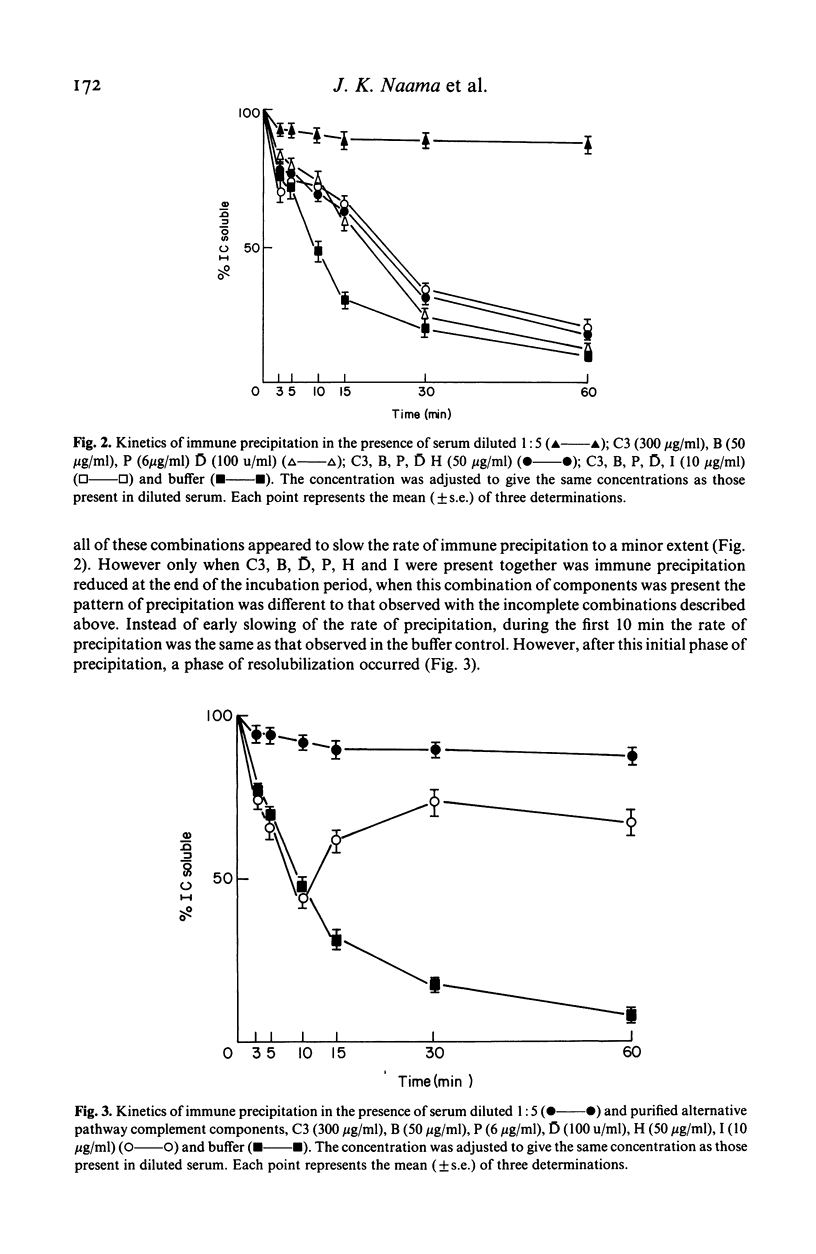
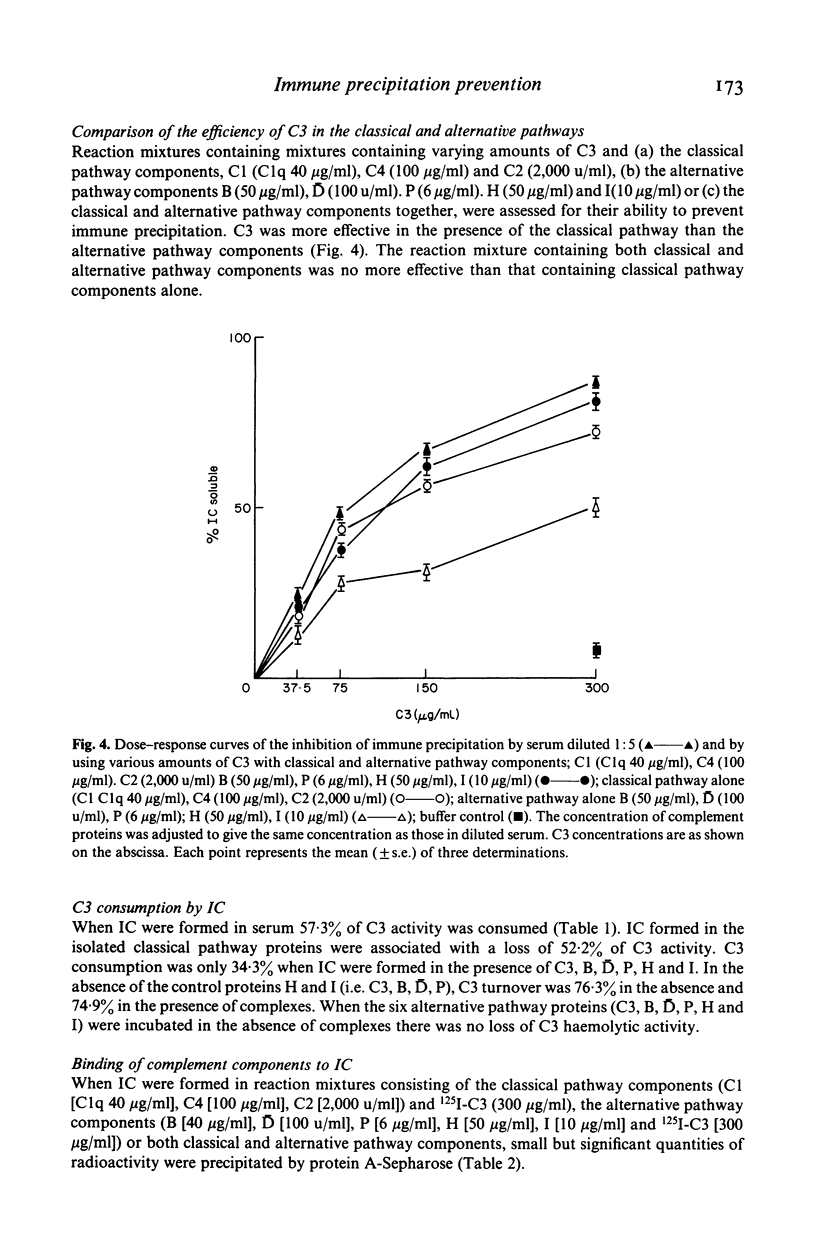
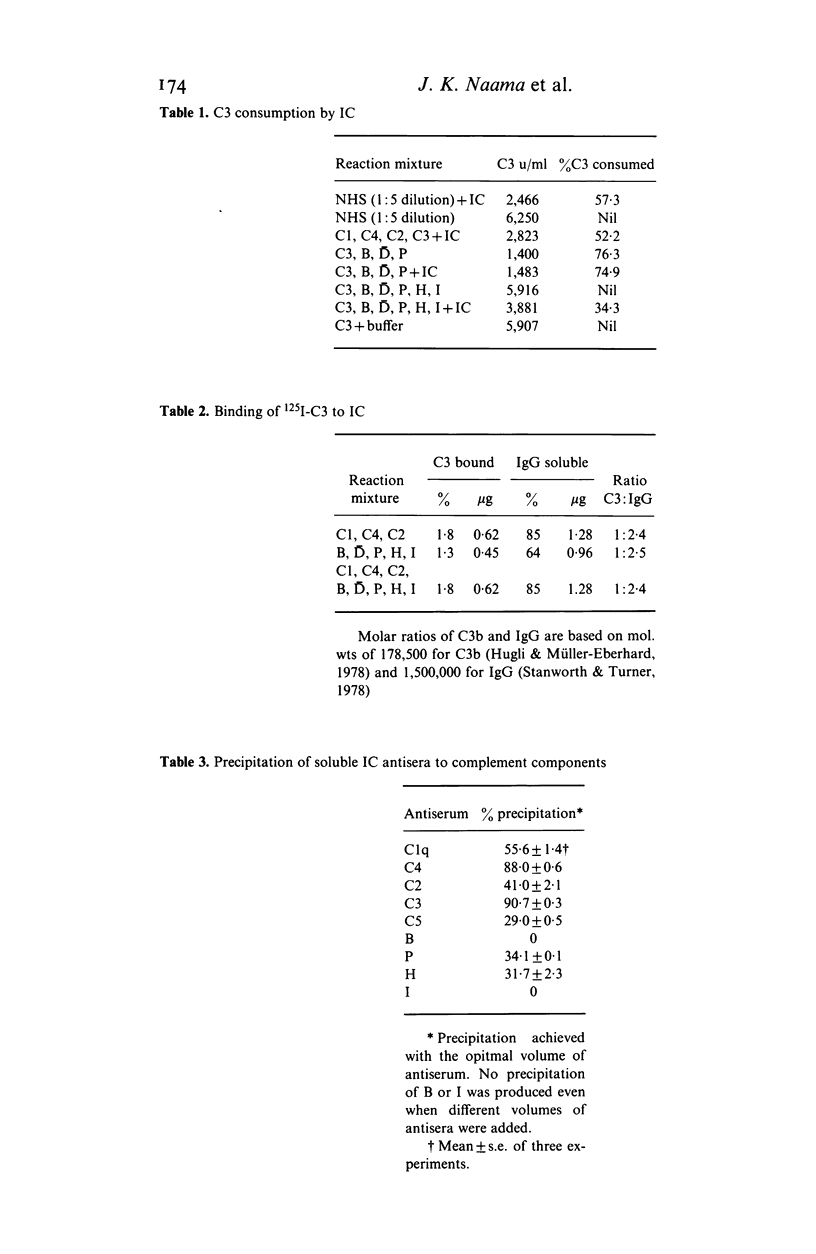
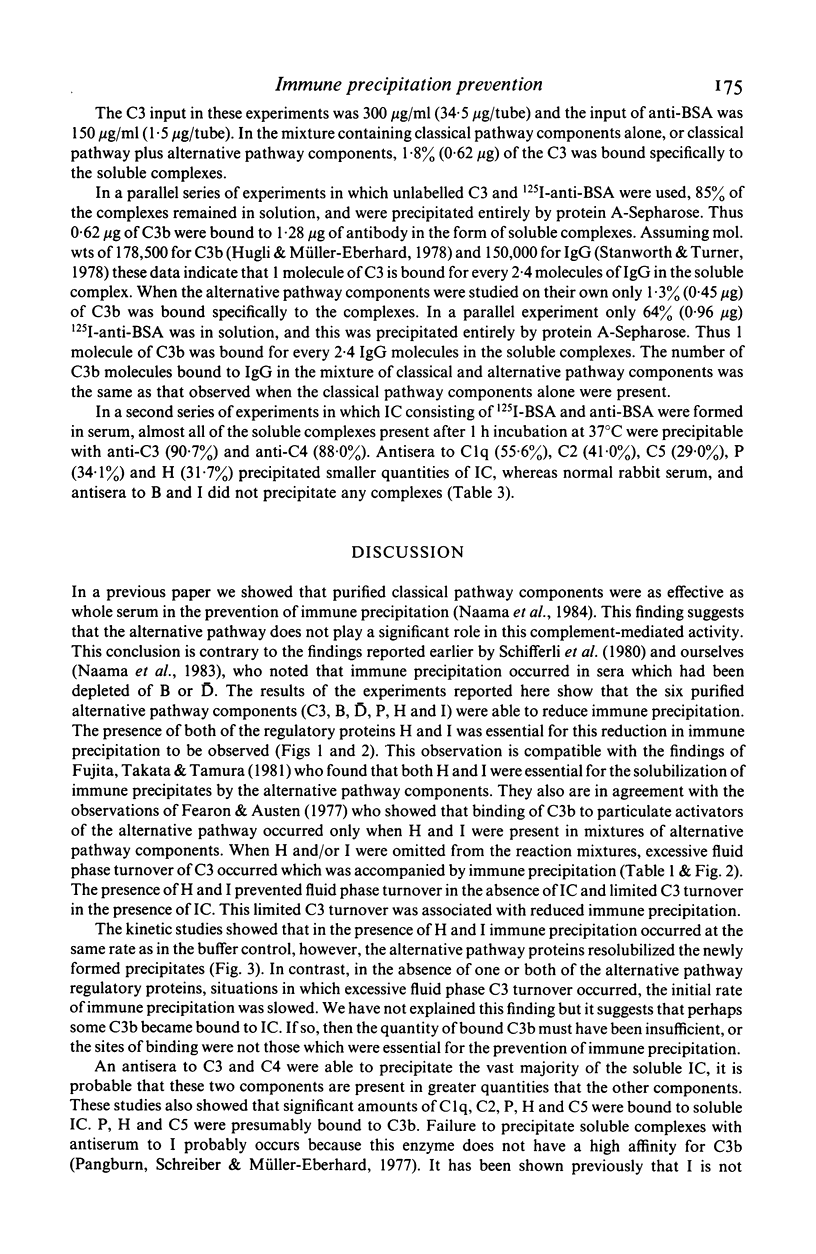
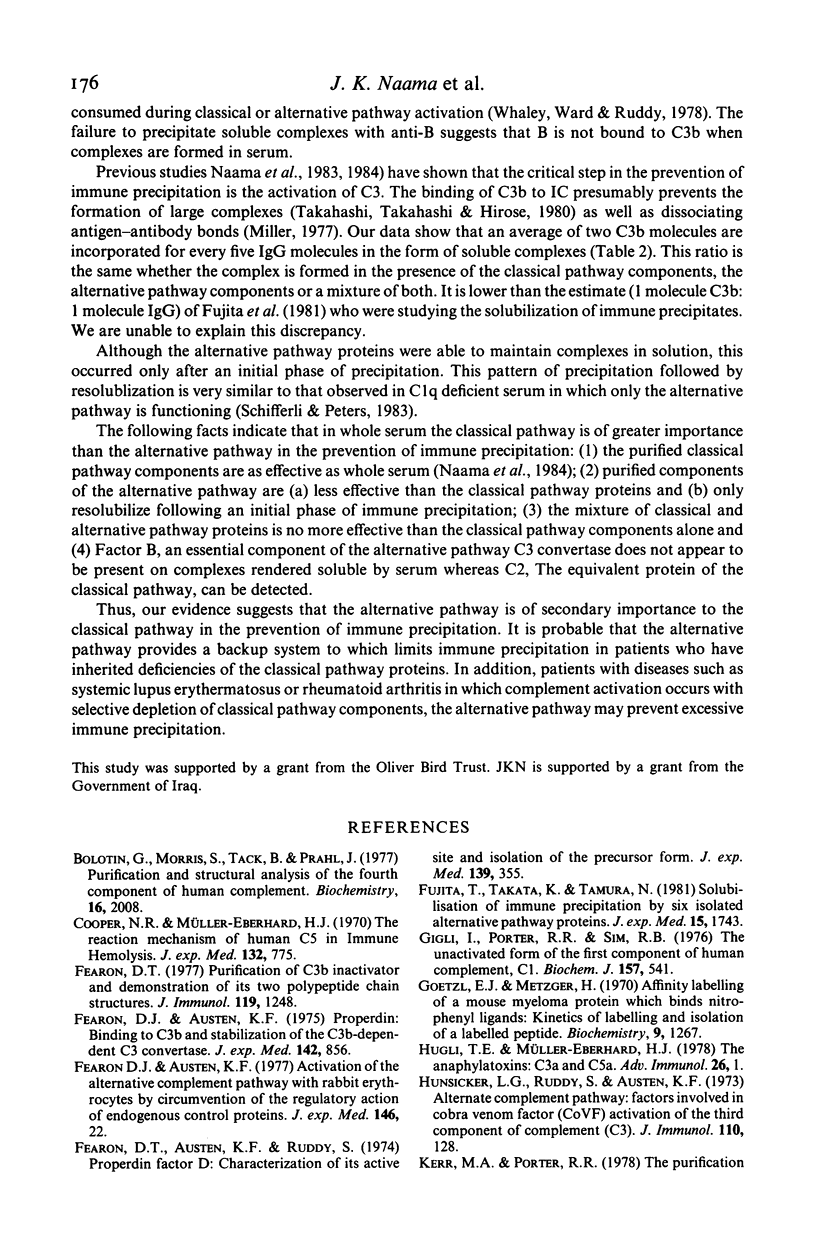
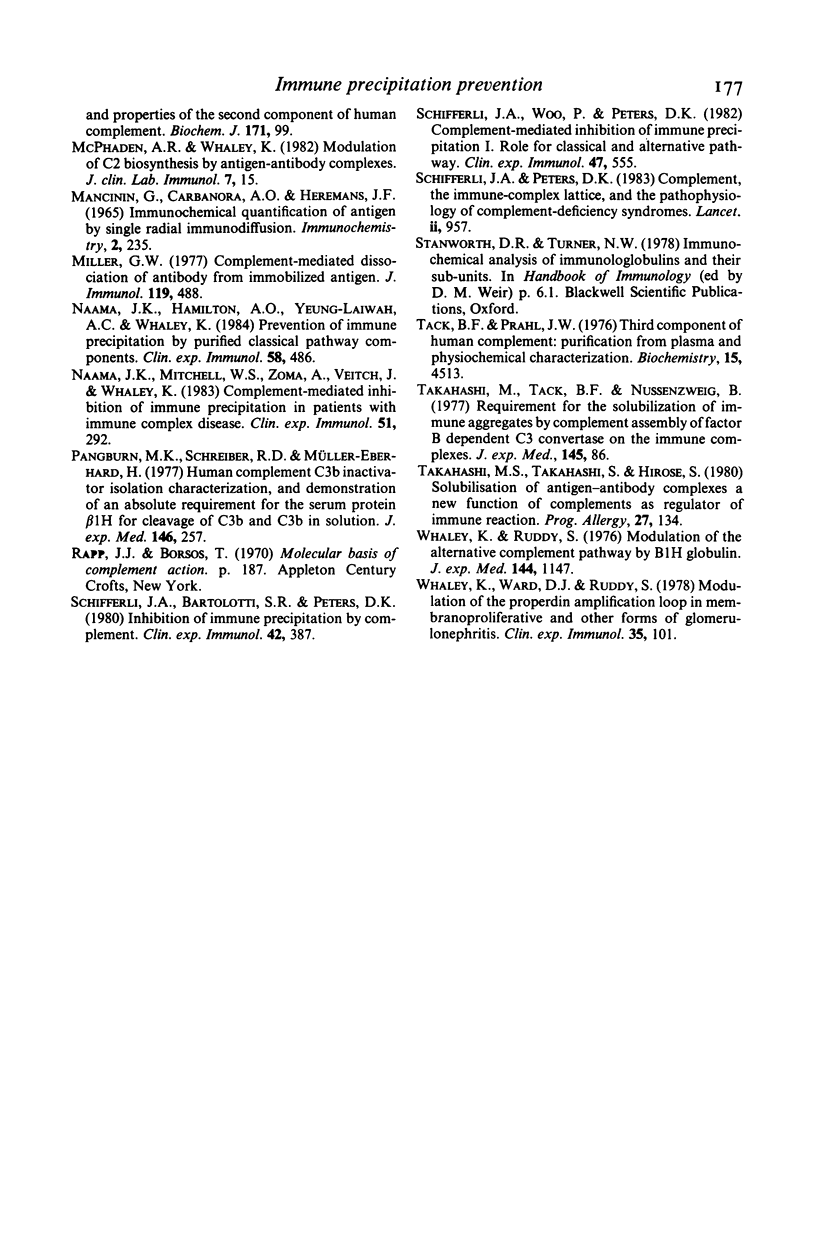
Selected References
These references are in PubMed. This may not be the complete list of references from this article.
- Bolotin C., Morris S., Tack B., Prahl J. Purification and structural analysis of the fourth component of human complement. Biochemistry. 1977 May 3;16(9):2008–2015. doi: 10.1021/bi00628a039. [DOI] [PubMed] [Google Scholar]
- Cooper N. R., Müller-Eberhard H. J. The reaction mechanism of human C5 in immune hemolysis. J Exp Med. 1970 Oct 1;132(4):775–793. doi: 10.1084/jem.132.4.775. [DOI] [PMC free article] [PubMed] [Google Scholar]
- Fearon D. T., Austen K. F. Properdin: binding to C3b and stabilization of the C3b-dependent C3 convertase. J Exp Med. 1975 Oct 1;142(4):856–863. doi: 10.1084/jem.142.4.856. [DOI] [PMC free article] [PubMed] [Google Scholar]
- Fearon D. T., Austen K. F., Ruddy S. Properdin factor D: characterization of its active site and isolation of the precursor form. J Exp Med. 1974 Feb 1;139(2):355–366. doi: 10.1084/jem.139.2.355. [DOI] [PMC free article] [PubMed] [Google Scholar]
- Fearon D. T. Purification of C3b inactivator and demonstration of its two polypeptide chain structure. J Immunol. 1977 Oct;119(4):1248–1252. [PubMed] [Google Scholar]
- Fujita T., Takata Y., Tamura N. Solubilization of immune precipitates by six isolated alternative pathway proteins. J Exp Med. 1981 Dec 1;154(6):1743–1751. doi: 10.1084/jem.154.6.1743. [DOI] [PMC free article] [PubMed] [Google Scholar]
- Gigli I., Porter R. R., Sim R. B. The unactivated form of the first component of human complement, C1. Biochem J. 1976 Sep 1;157(3):541–548. doi: 10.1042/bj1570541. [DOI] [PMC free article] [PubMed] [Google Scholar]
- Goetzl E. J., Metzger H. Affinity labeling of a mouse myeloma protein which binds nitrophenyl ligands. Kinetics of labeling and isolation of a labeled peptide. Biochemistry. 1970 Mar 3;9(5):1267–1278. doi: 10.1021/bi00807a031. [DOI] [PubMed] [Google Scholar]
- Hugli T. E., Müller-Eberhard H. J. Anaphylatoxins: C3a and C5a. Adv Immunol. 1978;26:1–53. doi: 10.1016/s0065-2776(08)60228-x. [DOI] [PubMed] [Google Scholar]
- Hunsicker L. G., Ruddy S., Austen K. F. Alternate complement pathway: factors involved in cobra venom factor (CoVF) activation of the third component of complement (C3). J Immunol. 1973 Jan;110(1):128–138. [PubMed] [Google Scholar]
- Kerr M. A., Porter R. R. The purification and properties of the second component of human complement. Biochem J. 1978 Apr 1;171(1):99–107. doi: 10.1042/bj1710099. [DOI] [PMC free article] [PubMed] [Google Scholar]
- Mancini G., Carbonara A. O., Heremans J. F. Immunochemical quantitation of antigens by single radial immunodiffusion. Immunochemistry. 1965 Sep;2(3):235–254. doi: 10.1016/0019-2791(65)90004-2. [DOI] [PubMed] [Google Scholar]
- McPhaden A. R., Whaley K. Modulation of C2 biosynthesis by antigen-antibody complexes. J Clin Lab Immunol. 1982 Jan;7(1):15–19. [PubMed] [Google Scholar]
- Miller G. W. Complement-mediated dissociation of antibody from immobilized antigen. J Immunol. 1977 Aug;119(2):488–493. [PubMed] [Google Scholar]
- Naama J. K., Hamilton A. O., Yeung-Laiwah A. C., Whaley K. Prevention of immune precipitation by purified classical pathway complement components. Clin Exp Immunol. 1984 Nov;58(2):486–492. [PMC free article] [PubMed] [Google Scholar]
- Naama J. K., Mitchell W. S., Zoma A., Veitch J., Whaley K. Complement-mediated inhibition of immune precipitation in patients with immune complex diseases. Clin Exp Immunol. 1983 Feb;51(2):292–298. [PMC free article] [PubMed] [Google Scholar]
- Pangburn M. K., Schreiber R. D., Müller-Eberhard H. J. Human complement C3b inactivator: isolation, characterization, and demonstration of an absolute requirement for the serum protein beta1H for cleavage of C3b and C4b in solution. J Exp Med. 1977 Jul 1;146(1):257–270. doi: 10.1084/jem.146.1.257. [DOI] [PMC free article] [PubMed] [Google Scholar]
- Schifferli J. A., Bartolotti S. R., Peters D. K. Inhibition of immune precipitation by complement. Clin Exp Immunol. 1980 Nov;42(2):387–394. [PMC free article] [PubMed] [Google Scholar]
- Schifferli J. A., Peters D. K. Complement, the immune-complex lattice, and the pathophysiology of complement-deficiency syndromes. Lancet. 1983 Oct 22;2(8356):957–959. doi: 10.1016/s0140-6736(83)90464-6. [DOI] [PubMed] [Google Scholar]
- Schifferli J. A., Woo P., Peters D. K. Complement-mediated inhibition of immune precipitation. I. Role of the classical and alternative pathways. Clin Exp Immunol. 1982 Mar;47(3):555–562. [PMC free article] [PubMed] [Google Scholar]
- Tack B. D., Prahl J. W. Third component of human complement: purification from plasma and physicochemical characterization. Biochemistry. 1976 Oct 5;15(20):4513–4521. doi: 10.1021/bi00665a028. [DOI] [PubMed] [Google Scholar]
- Takahashi M., Tack B. F., Nussenzweig V. Requirements for the solubilization of immune aggregates by complement: assembly of a factor B-dependent C3-convertase on the immune complexes. J Exp Med. 1977 Jan 1;145(1):86–100. doi: 10.1084/jem.145.1.86. [DOI] [PMC free article] [PubMed] [Google Scholar]
- Takahashi M., Takahashi S., Hirose S. Solubilization of antigen-antibody complexes: a new function of complement as a regulator of immune reactions. Prog Allergy. 1980;27:134–166. [PubMed] [Google Scholar]
- Whaley K., Ruddy S. Modulation of the alternative complement pathways by beta 1 H globulin. J Exp Med. 1976 Nov 2;144(5):1147–1163. doi: 10.1084/jem.144.5.1147. [DOI] [PMC free article] [PubMed] [Google Scholar]
- Whaley K., Ward D., Ruddy S. Modulation of the properdin amplification loop in membranoproliferative and other forms of glomerulonephritis. Clin Exp Immunol. 1979 Jan;35(1):101–106. [PMC free article] [PubMed] [Google Scholar]


